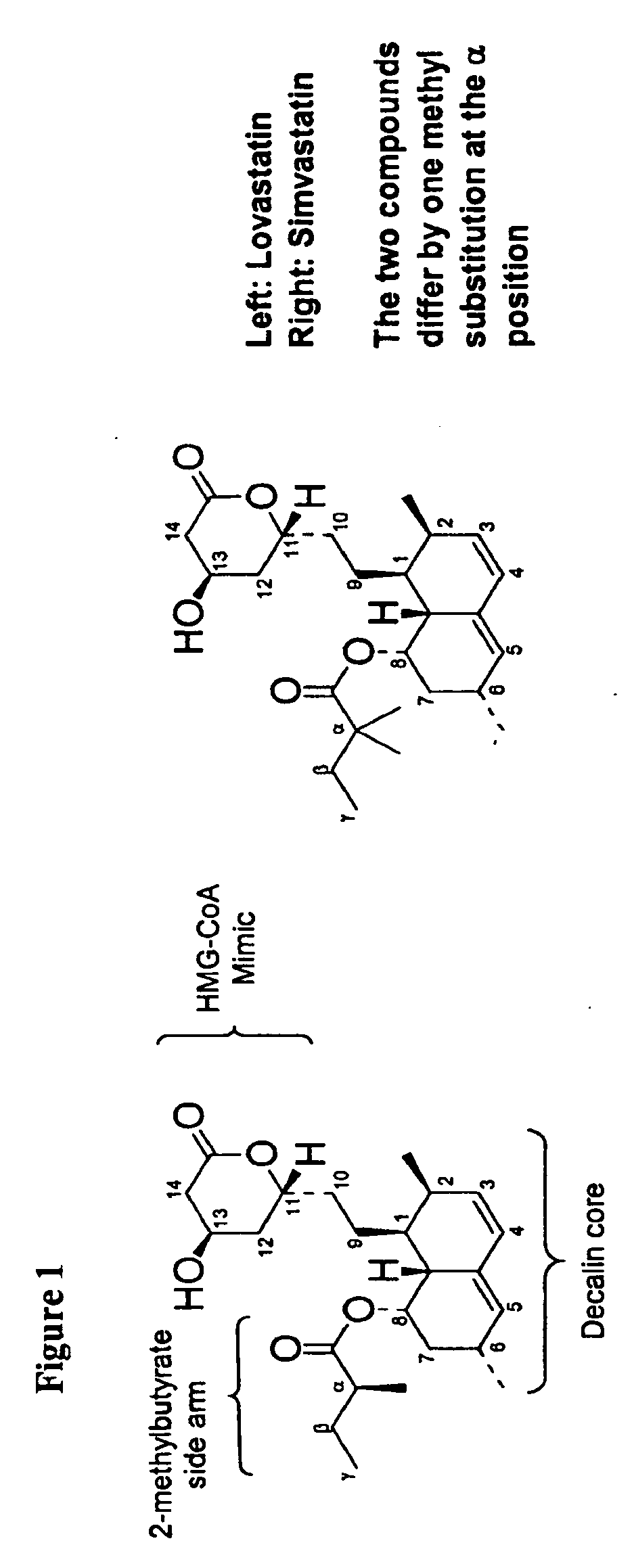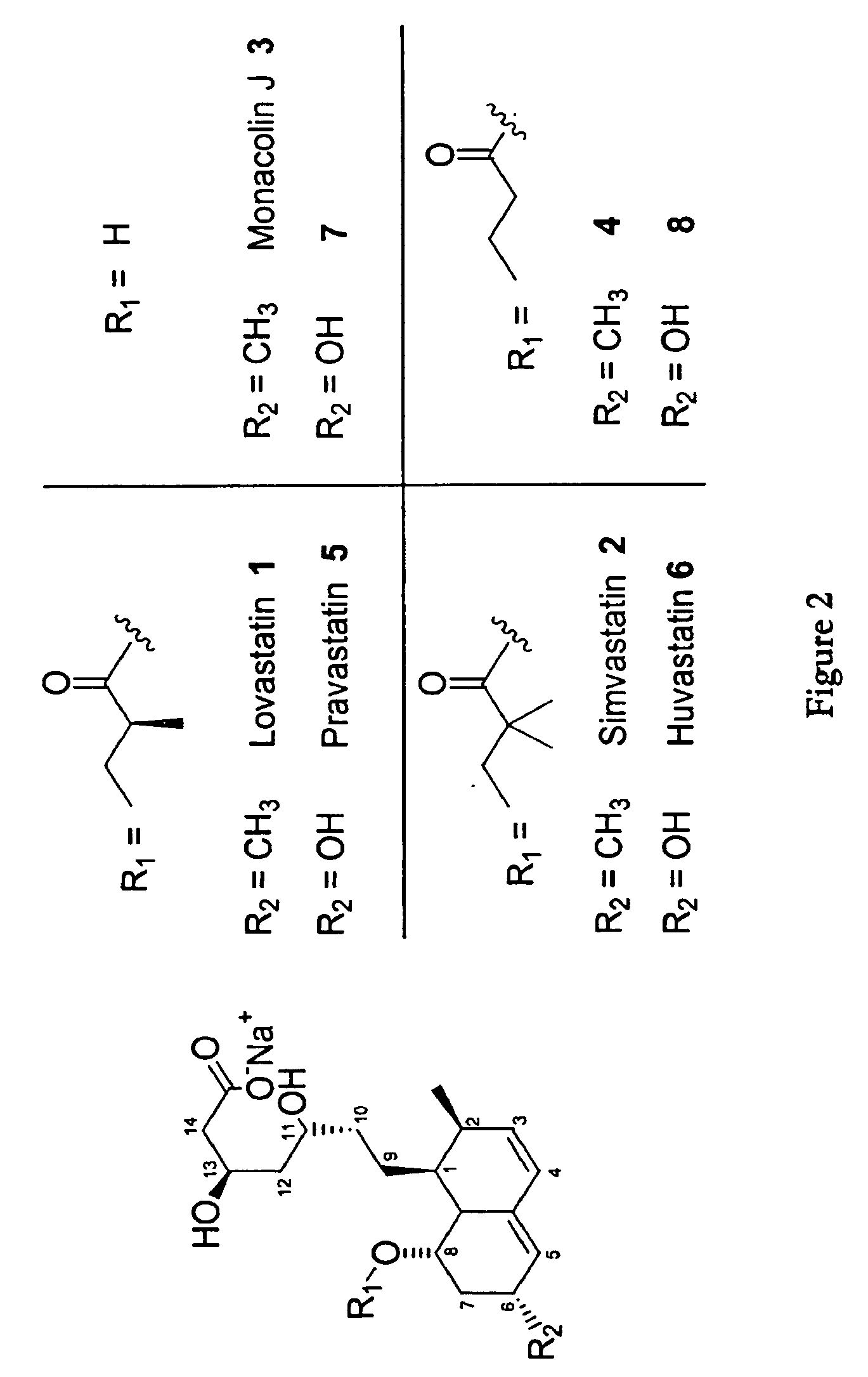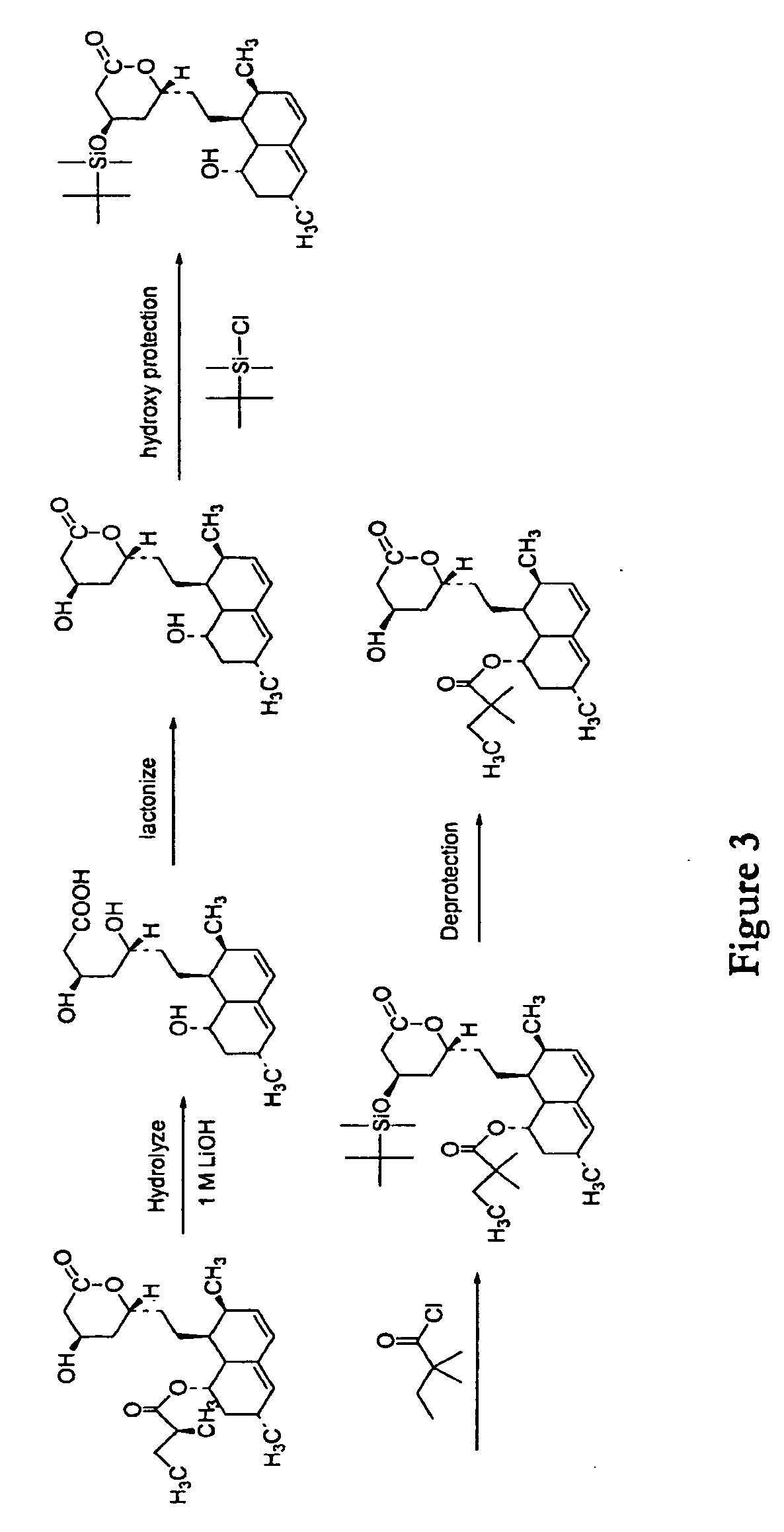Methods and Materials for Making Simvastatin and Related Compounds
a technology of simvastatin and related compounds, applied in the direction of transferases, drug compositions, cardiovascular disorders, etc., can solve the problems of lowering the overall yield and contributing to the current high cost of manufacturing simvastatin ($3 per pill)
- Summary
- Abstract
- Description
- Claims
- Application Information
AI Technical Summary
Benefits of technology
Problems solved by technology
Method used
Image
Examples
example 1
Cloning, Expression and Purification of Illustrative LovD Acyltransferase
[0109]The three exons of A. terreus LovD were individually amplified from the genomic DNA of A. terreus and spliced to yield a continuous open reading frame using splice by overlap extension PCR. The restriction sites NdeI and HindIII were introduced on the 5′ and 3′ outside primers, respectively. The gene cassette was ligated into pET28 (Novagen) to yield the expression construct pAW31. The E. coli BL21(DE3) strain transformed with pAW31 was grown in LB medium at 37° C. to a OD600 of 0.5, at which time 1 mM IPTG was added to the culture and expression was performed at 18° C. for 24 hours. Cells were collected by centrifugation, resuspended in Buffer A (50 mM Tris, pH. 8.0, 2 mM DTT, 2 mM EDTA) and were lysed by sonication. Cell debris and insoluble proteins were removed by centrifugation (17,000 g, 4° C., 1 hour). To the cleared lysate, 2 mL of Ni-NTA resin (Qiagen) was added. LovD was purified using a step gr...
example 2
Illustrative Fermentation Conditions
[0110]Fermentation conditions: 500 mL culture with LB media with 30 mg / L kanamycin. At OD600 of 1.0, cells were concentrated to a final OD600 of 5.0 and induced with 1 mM IPTG. Substrates monacolin J and α-diethylbutyryl-SNAC were added to a final concentration of 1 mM and 4 mM. At different time points, culture samples were collected, centrifuged, filtered and injected on to HPLC (20 μL). Extraction conditions: When maximum conversion was reached, the broth was acidified to pH of 2.0, extracted with ethyl acetate, dried and redissolved in toluene. The lactone form of monacolin J was obtained by refluxing using a soxhlet apparatus as discussed before (see, e.g., J. L. Sorensen, K et. al., Org. Biomol. Chem. 2003, 1, 5059).
[0111]A variety of fermentation media such as LB, F1 or TB fermentation media are well known in the art which can be used or adapted for use with embodiments of the invention disclosed herein including LB, TB and F1 media. Furthe...
example 3
Improving Simvastatin Bioconversion in Escherichia Coli by Deletion of BioH
[0126]This example further characterizes the LovD polypeptide encoded in the lovastatin gene cluster (see also Xie et al., (2006) Chem Biol 13: 1161-1169). LovD catalyzes the last step of lovastatin biosynthesis and is responsible for transferring the 2-methylbutyrate side chain from the megasynthase LovF to the immediate biosynthetic precursor, monacolin J (MJ) acid (see, e.g., Kennedy et al., (1999) Science 284: 1368-1372). We demonstrated that LovD displays broad substrate specificity towards the decalin core, the thioester acyl unit and the thioester acyl carrier. Using an Escherichia coli stain overexpressing LovD and a cell-membrane permeable thioester dimethylbutyryl-S-methyl metcaptopropionate PMB-S-MMP) (FIG. 13A), we developed a whole cell biocatalytic process that can convert W acid to simvastatin acid in one step with high yields (see, e.g., Xie et al., (2007) Appl Environ Microbiol 73: 2054-2060)...
PUM
| Property | Measurement | Unit |
|---|---|---|
| Temperature | aaaaa | aaaaa |
| Fraction | aaaaa | aaaaa |
| Time | aaaaa | aaaaa |
Abstract
Description
Claims
Application Information
 Login to View More
Login to View More - R&D
- Intellectual Property
- Life Sciences
- Materials
- Tech Scout
- Unparalleled Data Quality
- Higher Quality Content
- 60% Fewer Hallucinations
Browse by: Latest US Patents, China's latest patents, Technical Efficacy Thesaurus, Application Domain, Technology Topic, Popular Technical Reports.
© 2025 PatSnap. All rights reserved.Legal|Privacy policy|Modern Slavery Act Transparency Statement|Sitemap|About US| Contact US: help@patsnap.com



